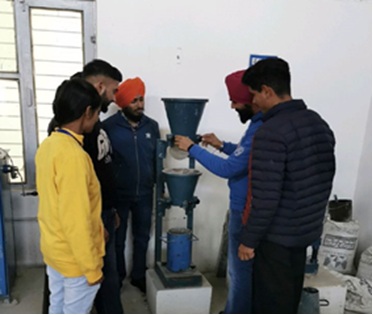Slump Test under “Fix-it” day Activity
Date:24 April 2025
Activity Report
Slump Test Report - Workability of Fresh Concrete
1. Introduction
The slump test is a simple and widely used method to assess the workability and consistency of fresh concrete.
It provides an indication of the concrete’s ability to flow and be placed without segregation.
2. Objective
To determine the workability of fresh concrete by measuring the slump value using the slump cone method.
3. Apparatus and Materials
- Slump cone (300 mm high, bottom diameter 200 mm, top diameter 100 mm)
- Tamping rod (16 mm diameter, 600 mm long)
- Base plate
- Measuring scale
- Fresh concrete mix
4. Procedure
- Place the slump cone on a flat, non-absorbent surface.
- Fill the cone with fresh concrete in three equal layers.
- Tamp each layer 25 times with the tamping rod.
- Level the top and carefully lift the cone vertically.
- Measure the vertical subsidence (slump) of the concrete from the original height of the cone.
5. Results
Example:
- Measured Slump: 75 mm
- Slump Type: True slump (uniform subsidence without collapse or shear)
6. Conclusion
The slump value of 75 mm indicates medium workability, suitable for reinforced concrete placed with light vibration.
The test confirms the mix is workable and consistent for general construction purposes.

